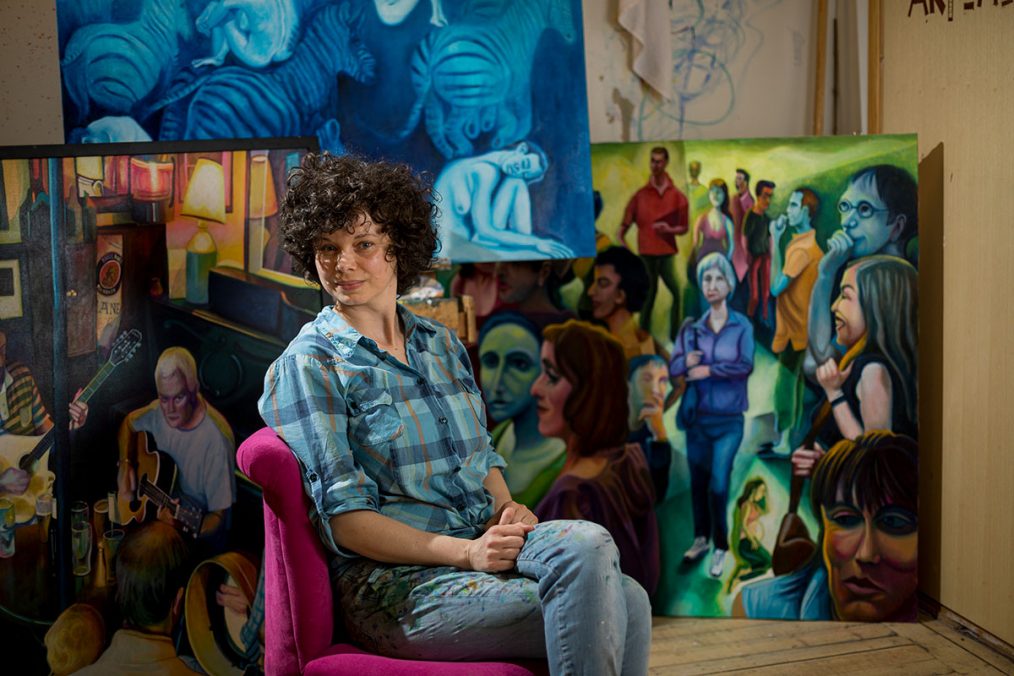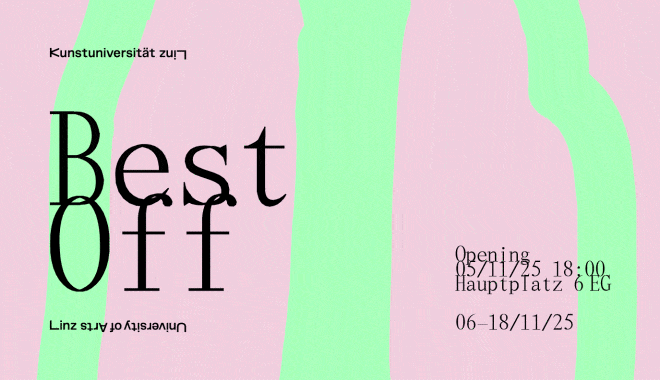
In her work Sulikowska is reflecting upon modern urban life and the toll of everyday life scene, however her recent painting started moving towards more symbolic settings, including her dreams and historical event. She reflect on how this historical experience is passed (consciously or unconsciously) to the next generation and the effects it bears on cultural identity, nationality and itself. Inspired by Virginia Woolf books she also experimenting on stream of consciousness in paintings.
Where do you get your inspiration from?
Between 2008 until 2019, most of my works have been inspired by my cycling trips, around Europe, Latin America, Africa, Japan, New Zealand, Norway and Balkans Penisula. I consider these trips as part of my artistic practices. The theme that connects all the paintings and artworks is the everyday lives of people in their social and cultural environments. My recent paintings from 2020, are shifting more into symbolic and surrealistic theme “Gambling,” 2020, “A Pig Sat On a Table Reflecting on Existence” 2020, “The Jews-Family Constalation” 2020 or “Dream” 2021.

Since I don’t travel that much, anymore (not only because of Covid19, but also for the reason to not using transport such as airplanes at all), I’m getting the inspiration from my own personal experience, books (Adeline Virginia Woolf – stream of consciousness), newspapers, world information in radio. I try to respond to what is happening in the world. I also have a part time job at meat factory, so I started to reflect about the problems of meat consumption, overall rapid capitalist development and global problems in broadly to understand the meaning of this word.
I’m also deeply inspired by the light that occurs in northern Norway, which in turn has an impact on the colors that I use in my painting. In my earlier painting when I was living in Spain, you can find many shades of bright yellow or red paint. Since I’m living in north of Norway, my works are more dark blue with a green shades, referring to the northern lights.

How do you describe your art?
At the initial stages intently I study and plan my subject using my own sketches and send the outline to canvas. I also use photography as points of reference, testimony of the specific feature of people character and as record of my travel, since I can’t carry all my necessary art equipment on a bicycle. Photography in my art plays important roles as document of moments. It can be also a starting point for the painting like an imagine I saw in newspaper, but after that my imagination is guiding me in a very spontaneously way. After I completed my drawing on canvas, I then apply deliberately intensive, pure acrylic colors direct from the paint tubes and after gently I build the atmosphere of painting using oil colors.

How would you describe yourself?
Well, first thing that comes to my mind is that I m introvert. I am a creative person; I have a bit over sensitive and sentimental personality. I have an exuberant temperament and needs and I am very stubborn. I will also add that I am a highly sensitive person (HSP), which means that I have a rich imagination and a brilliant sense of humour. That will be the positive side of me. The negative side will be that I m a complicated one; anxious, depressed, consumed with myself, filled with enormous self-doubt and a need for approval.

What topics are you dealing with?
The subject matter of my paintings from previous years oscillates around friendship, music and pleasure. Some of them are presenting ethnographic scenes concerning everyday life of people in different cultures like: „Peruvian Lady Selling Carpets in Pisac-Peru” (2013), „Peruvian Passengers” (2013), inspired by my past cycling trips around South America. In my work, I also try to raise topics related to politics, like in the painting “Amazigh (Berber) People Manifesting in Madrid”, 2015. In 2018 this painting I donated to the University in Tromsø, faculty of Peace and Conflict Transformation (MPCT), because the subject of this artwork alluded to Moroccan emigrants who settled in Madrid in Spain. The Spanish government wanted to deprive these people houses in order to build expensive hotels. The reason why I donated the painting was to arouse empathy for young people, who are going to study social science field that identifies and analyses violent and nonviolent behaviours., because I am deeply convinced that through art, we can deeply touch the problems that touching us.
And here, I would like to give you an example of an Polish artist, I value greatly, Paweł Hajncel. He is creating art performances, drawings, illustrations and paintings, which are inspired by Polish social, political and cultural life.
When do you know that an artwork is finished?
When I start my painting, I mostly come out from an image that I see somewhere outside of my everyday life or an dream. During the painting process something is happening with my memories and emotions, and I start to use the first thoughts or feelings that comes to me in a form of kind of inspiration. I connect with the painting. And after the painting is guiding me through my conscious or subconscious memories. I connect and correspond with the painting in the present moment.

Intuitively the painting is telling me when is ready and finish or not. I just know! When I don’t know what to do with the painting I leave the artwork in many days or a years in dark room, sometimes I need to destroy the artwork, because I feel I have no control of it and I don’t like it. After some rest days from it, I m coming back to it and I find also different value in this violent act. That is how I made my last painting, which is still not finished. This painting depicts two pigs heads with the human body on a horse.
Can you tell us what you have going on right now?
Currently I’m working on a collection of paintings depict people taken from historical stories, dreams, different situation, animals that are in north of Norway, people in their daily life scenes, problems. Positioning myself as witness and narrator, I seek to unfold stories accumulated in place and time.
Agata Magdalena Sulikowska – www.agatasulikowska.com





